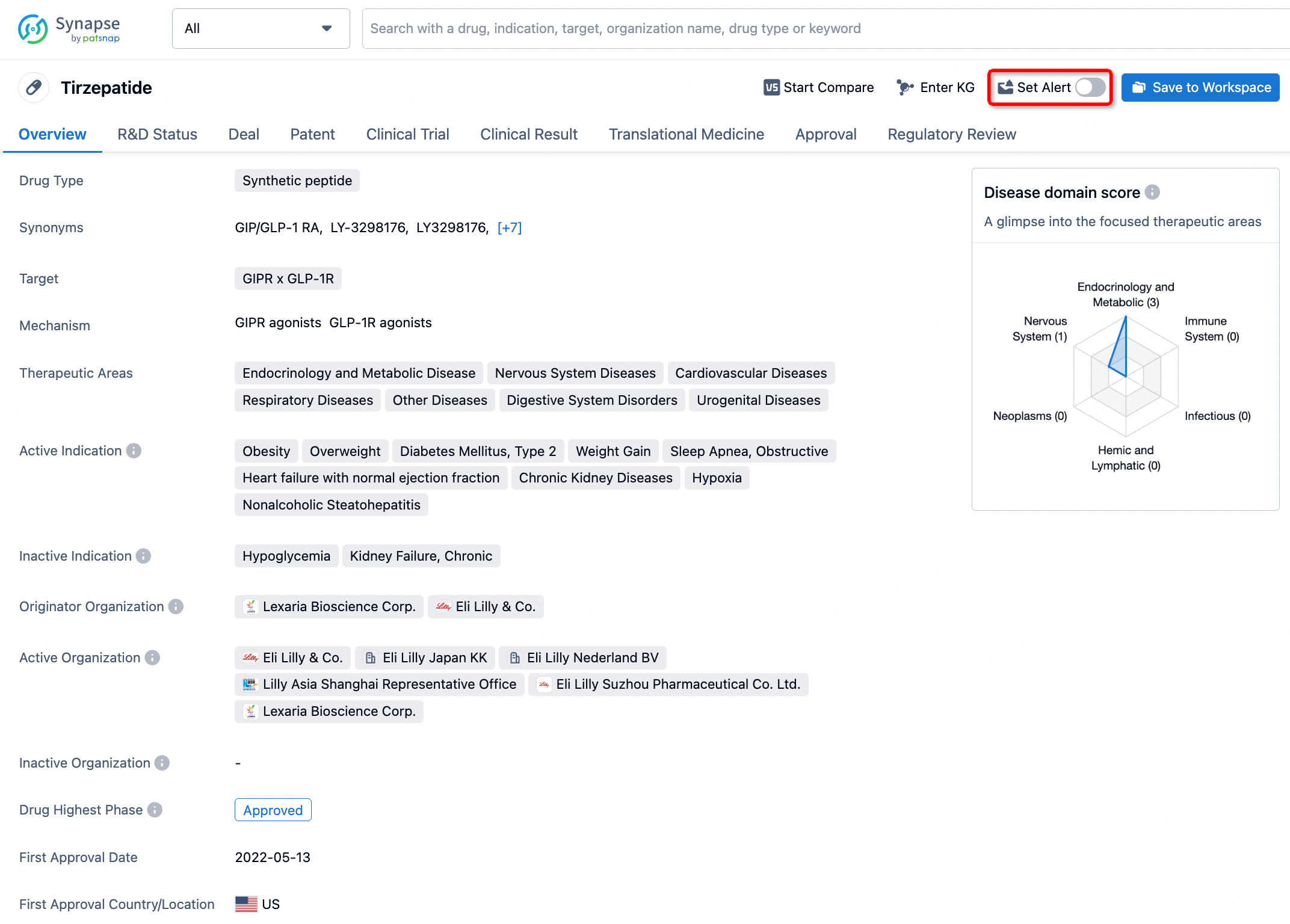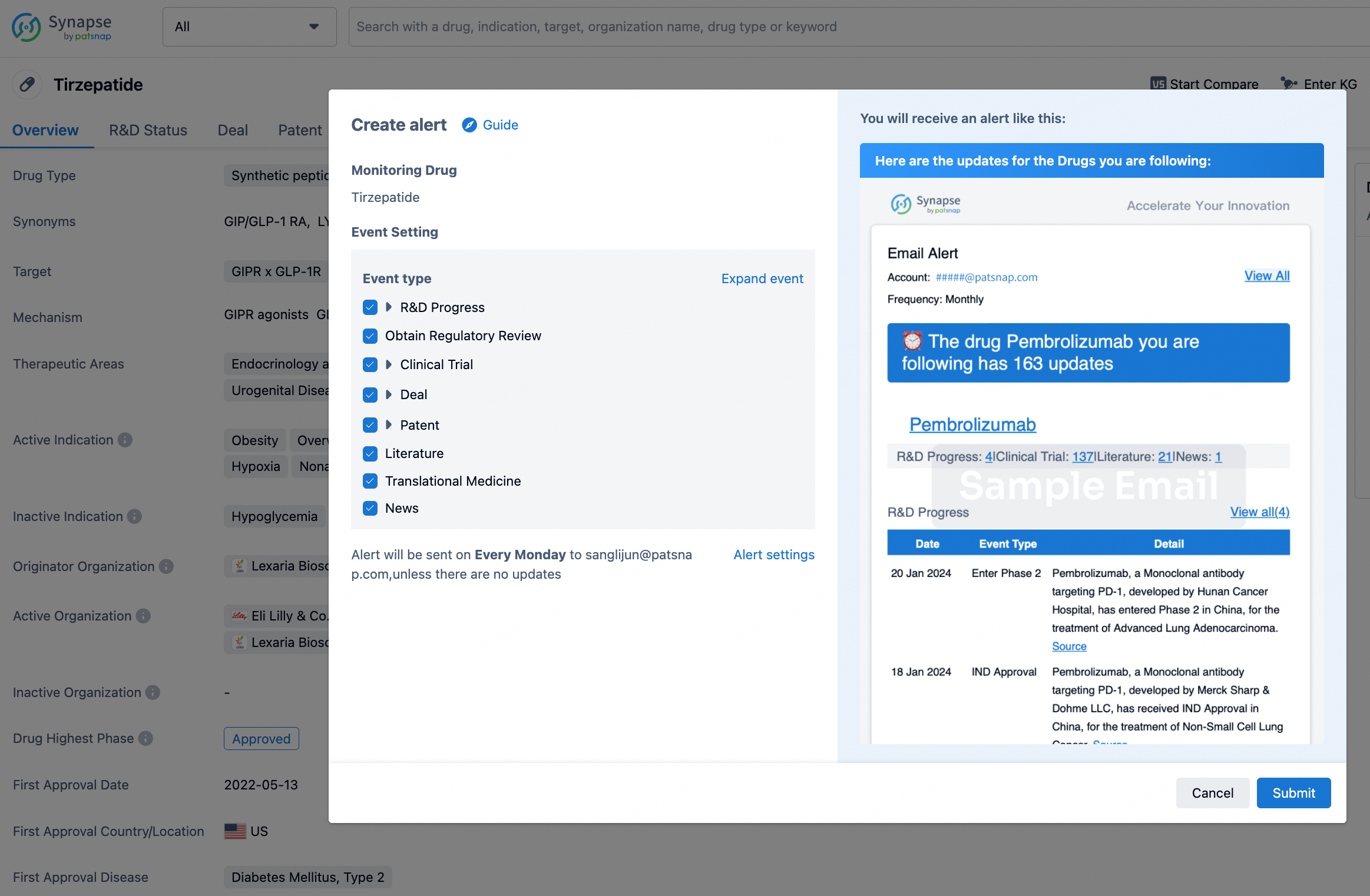Request Demo
What is the mechanism of Brivudine?
18 July 2024
Brivudine, a synthetic nucleoside analog, is an antiviral medication used primarily for the treatment of herpes zoster (shingles) in immunocompetent individuals. Understanding the mechanism of Brivudine necessitates a detailed exploration of its pharmacodynamics and pharmacokinetics, which together explain how the drug exerts its antiviral effects.
Brivudine, chemically known as (E)-5-(2-bromovinyl)-2'-deoxyuridine, mimics the structure of the natural nucleoside thymidine. When administered, it undergoes phosphorylation by cellular kinases to form its active triphosphate derivative, bromovinyl deoxyuridine triphosphate (BVdU-TP). This active form is crucial for its mechanism of action.
The primary mechanism of Brivudine involves its incorporation into the viral DNA during the replication process. The viral DNA polymerase enzyme mistakenly incorporates Brivudine triphosphate instead of the natural nucleotide thymidine triphosphate. Once inserted, BVdU-TP causes premature termination of the viral DNA chain. This occurs because Brivudine lacks the necessary components for the continuation of DNA strand elongation, effectively halting the replication of the viral genome. This termination prevents the virus from proliferating within the host cells.
Brivudine exhibits a high degree of specificity towards the viral enzyme due to its structural similarity to thymidine. This specificity minimizes its incorporation into the host's DNA, thereby reducing potential cytotoxic effects on human cells. The drug is particularly potent against the varicella-zoster virus (VZV), the causative agent of shingles, due to the high affinity of the viral thymidine kinase for Brivudine.
In addition to chain termination, Brivudine has a secondary mechanism of action. It inhibits the activity of the viral DNA polymerase by competing with the natural substrates. This competitive inhibition further disrupts the synthesis of viral DNA and enhances the antiviral effects of the drug.
The efficacy of Brivudine is also influenced by its pharmacokinetic properties. After oral administration, Brivudine is rapidly absorbed and converted into its active form in the infected cells. It achieves favorable concentrations in the skin and mucosal tissues, which are common sites of VZV replication. The drug has a relatively long intracellular half-life, allowing for sustained antiviral activity even with once-daily dosing.
However, it is important to note that Brivudine's use is contraindicated in patients receiving certain chemotherapeutic agents, such as 5-fluorouracil and its prodrugs, due to the risk of severe and potentially fatal drug interactions. These interactions occur because Brivudine irreversibly inhibits dihydropyrimidine dehydrogenase (DPD), an enzyme crucial for the metabolism of fluoropyrimidines. Inhibition of DPD leads to an accumulation of toxic levels of these chemotherapeutic agents, necessitating caution and patient screening before prescribing Brivudine.
In summary, Brivudine exerts its antiviral effects primarily through the incorporation into viral DNA, leading to chain termination and inhibition of viral DNA polymerase. Its selective action against VZV, coupled with favorable pharmacokinetics, makes it an effective treatment for herpes zoster. However, careful consideration of potential drug interactions is essential to ensure patient safety.
Brivudine, chemically known as (E)-5-(2-bromovinyl)-2'-deoxyuridine, mimics the structure of the natural nucleoside thymidine. When administered, it undergoes phosphorylation by cellular kinases to form its active triphosphate derivative, bromovinyl deoxyuridine triphosphate (BVdU-TP). This active form is crucial for its mechanism of action.
The primary mechanism of Brivudine involves its incorporation into the viral DNA during the replication process. The viral DNA polymerase enzyme mistakenly incorporates Brivudine triphosphate instead of the natural nucleotide thymidine triphosphate. Once inserted, BVdU-TP causes premature termination of the viral DNA chain. This occurs because Brivudine lacks the necessary components for the continuation of DNA strand elongation, effectively halting the replication of the viral genome. This termination prevents the virus from proliferating within the host cells.
Brivudine exhibits a high degree of specificity towards the viral enzyme due to its structural similarity to thymidine. This specificity minimizes its incorporation into the host's DNA, thereby reducing potential cytotoxic effects on human cells. The drug is particularly potent against the varicella-zoster virus (VZV), the causative agent of shingles, due to the high affinity of the viral thymidine kinase for Brivudine.
In addition to chain termination, Brivudine has a secondary mechanism of action. It inhibits the activity of the viral DNA polymerase by competing with the natural substrates. This competitive inhibition further disrupts the synthesis of viral DNA and enhances the antiviral effects of the drug.
The efficacy of Brivudine is also influenced by its pharmacokinetic properties. After oral administration, Brivudine is rapidly absorbed and converted into its active form in the infected cells. It achieves favorable concentrations in the skin and mucosal tissues, which are common sites of VZV replication. The drug has a relatively long intracellular half-life, allowing for sustained antiviral activity even with once-daily dosing.
However, it is important to note that Brivudine's use is contraindicated in patients receiving certain chemotherapeutic agents, such as 5-fluorouracil and its prodrugs, due to the risk of severe and potentially fatal drug interactions. These interactions occur because Brivudine irreversibly inhibits dihydropyrimidine dehydrogenase (DPD), an enzyme crucial for the metabolism of fluoropyrimidines. Inhibition of DPD leads to an accumulation of toxic levels of these chemotherapeutic agents, necessitating caution and patient screening before prescribing Brivudine.
In summary, Brivudine exerts its antiviral effects primarily through the incorporation into viral DNA, leading to chain termination and inhibition of viral DNA polymerase. Its selective action against VZV, coupled with favorable pharmacokinetics, makes it an effective treatment for herpes zoster. However, careful consideration of potential drug interactions is essential to ensure patient safety.
How to obtain the latest development progress of all drugs?
In the Synapse database, you can stay updated on the latest research and development advances of all drugs. This service is accessible anytime and anywhere, with updates available daily or weekly. Use the "Set Alert" function to stay informed. Click on the image below to embark on a brand new journey of drug discovery!
AI Agents Built for Biopharma Breakthroughs
Accelerate discovery. Empower decisions. Transform outcomes.
Get started for free today!
Accelerate Strategic R&D decision making with Synapse, PatSnap’s AI-powered Connected Innovation Intelligence Platform Built for Life Sciences Professionals.
Start your data trial now!
Synapse data is also accessible to external entities via APIs or data packages. Empower better decisions with the latest in pharmaceutical intelligence.


